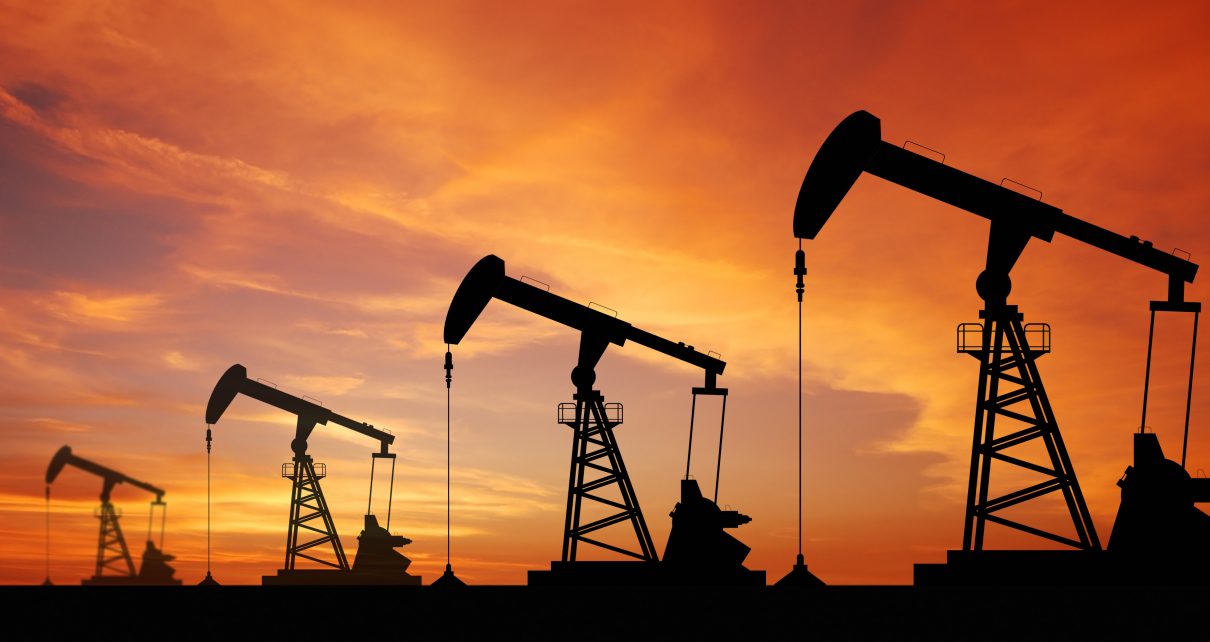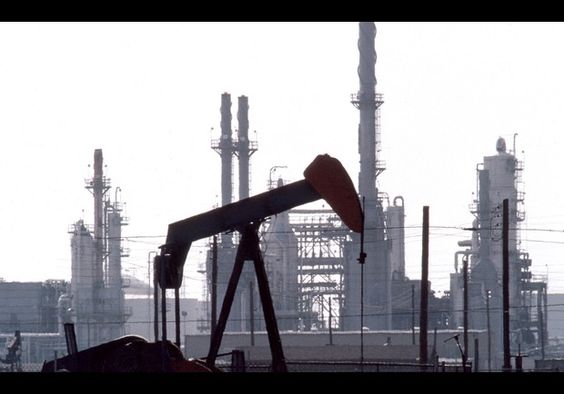
Oil rigs in the sunset. (Photo: Thaiview/Shutterstock)
Ringside: Is California Ready to Kill Its Oil Industry?
Newsom and the Legislature have created a margin between supply and demand so thin that the slightest disruption to refinery output will create a crisis
By Edward Ring, November 8, 2024 3:55 am
 California’s state legislature is determined to eliminate fossil fuel as soon as possible, with oil at the top of the list. This goal is shared by the Governor and Attorney General, along with leadership and staff at every one of the many state agencies that collectively regulate the industry. But even if this goal is necessary and desirable, which is debatable, the methods being employed to achieve it are flawed.
California’s state legislature is determined to eliminate fossil fuel as soon as possible, with oil at the top of the list. This goal is shared by the Governor and Attorney General, along with leadership and staff at every one of the many state agencies that collectively regulate the industry. But even if this goal is necessary and desirable, which is debatable, the methods being employed to achieve it are flawed.
To begin with, and this can’t be repeated often enough, California still depends on petroleum for 50 percent of its total energy, and natural gas for another 30 percent. Dependence on gasoline is proving difficult to reduce, as California’s EV sales are leveling off, with 2024 likely to show no growth over 2023. And even after years of dramatic year-over-year sales growth, EVs still comprise less than 5 percent of California’s total registered vehicles.
It’s possible that at the present level of price and performance, most of the consumers who want to purchase EVs have already done so. It’s also not clear that we will have achieved adequate generating, charging, and transmission infrastructure by the time the percentage of EVs on the road doubles or triples, much less becomes the majority of vehicles.
Consumption data indicates that California’s use of petroleum is actually increasing slightly. According to the California Energy Commission, the state’s total consumption of crude oil bottomed out during the COVID slowdown of 2020 at 485 million barrels, and then rose to 524 million barrels in 2021, 527 million barrels in 2022, and 528 million barrels in 2023.
So while it still isn’t unreasonable to expect California’s total consumption of crude oil to drop as EVs are adopted and gasoline powered vehicles become more energy efficient, the question is how fast, and will it be fast enough?
Against this backdrop, the state legislature passed “ABX2-1” on October 14 in a special session called by the governor. Designed to prevent “price gouging,” the bill requires California’s oil refineries to maintain a “minimum inventory of fuel to avoid fuel shortages.”
There has been an almost perfect correlation between fluctuations in gasoline prices and the spot price for crude oil, making it questionable that this bill will ever save consumers money since this fact makes it clear that gas companies are not inflating prices beyond market rates. But laying another expensive requirement onto California’s oil refineries is a dangerous game. Three days after ABX2-1 was signed, Phillips 66 announced it would shut down its refinery in Los Angeles. A company representative stated “this decision is not related to the recent bill signing,” an assertion that industry insiders have told me is ridiculous.
Regardless of the reasons for this particular shutdown, California needs its oil refineries. The state requires a special formulation in order to reduce air pollution, which means it is not permitted to import gasoline from refineries in other states. Currently, California’s total refinery capacity is 1.62 million barrels per day, against average consumption of 1.45 million barrels per day. That’s a 10.7 percent surplus capacity, which is already tight. But when the Phillips 66 plant closes next year, refinery capacity will drop to 1.48 million barrels per day, which will leave refinery capacity only 2.3 percent in excess of average demand.
What, then, is the best way to prevent gasoline price spikes? To micromanage refinery operations and mandate investment in additional storage when there isn’t any surplus left to store? Or to stop passing laws that create an incentive to shut down refineries? What Newsom and the state legislature have created is a margin between supply and demand so thin that the slightest disruption to refinery output will create a crisis.
At the same time, California’s latest laws and regulations are destroying what remains of the industry’s ability to extract oil in-state. In Kern and other Californian oil producing counties, new drilling permits are almost impossible to acquire, and existing wells are subject to new restrictions that require setbacks of nearly a mile from any “sensitive receptor,” i.e., any building that houses people or is open to the public.
Oil production in California, steady throughout the 1980s at nearly 400 million barrels per year, has fallen to only 118 billion barrels in 2023, and the rate of decline is accelerating. Up through 2017, in-state production was dropping at a rate between 2-3 percent per year, but since then, production has dropped by 5-7 percent per year. We now import 75 percent of our crude oil. The industry is drying up. Energy companies are trying to adapt by grabbing federal subsidies to research hydrogen and CO2 sequestration. But the feasibility and ultimate value of these solutions are not clear, nor is the continuity of the subsidies.
Achieving and maintaining abundant and affordable energy in California will require a unified industry standing up for reasonable balance between environmental concerns and economic health. But there are multiple types of energy interests competing for dominance in the state. What might it take to unify the oil, gas, nuclear, hydro, wind, solar, geothermal, and biomass industries behind a shared policy agenda that fosters energy abundance?
As it is, policy driven scarcity has a logic all its own. With regulations crippling supply and driving up production costs, conventional energy becomes more expensive. This makes renewables become somewhat more competitive, with subsidies making up the difference. The only loser is the consumer. That is the model driving California’s energy economy today, as we are encouraged to tolerate high prices in order to save the planet.
Our state energy policy will continue this regressive strategy until there is a miscalculation or a serious break in the supply chain. When brownouts turn into blackouts, and high prices at the pump turn into gas lines reminiscent of 1979, the idealism of our state legislature will be put to the test. We may hope it doesn’t come to that.
- Ringside: What is the Future of California’s Republican Party? - December 31, 2025
- Ringside: CA GOP Just Blew $46 Million for Nothing – Here’s How They Can Avoid Repeating That Mistake in 2026 - December 24, 2025
- Ringside: Will the Delta Pumps Operate at Capacity this Winter? - December 18, 2025




The missing part of Newsom’s fantasy is simple: how is the hand to mouth non-EV population going to get to work? When Joe and Mary’s 2012 Honda Accord finally gives up, who is going to provide them the mobility to get to work? Will the state buy them a car? Will the state send a state version of Uber to pick them up? Will they live in camps by the gate?
The constitution never dreamed a state would smother its population claiming to save them from themselves.
“the bill requires California’s oil refineries to maintain a “minimum inventory of fuel to avoid fuel shortages” I’m a little confused after working in gasoline S&D for 47 years. Refineries will take their inventory down to almost zero if they have to to cover their customer obligations. If they have to maintain a minimum inventory, doesn’t that mean that we will have even more shortages. Could a refinery, in order to avoid price gouging regulations, just simply export more of their gasoline to Mexico?
Best not to apply logic to the Democrats! Just know they are psychopaths and lust for power and control like vampires need blood. THEN everything they do makes perfect sense.
Electric cars are actual terrorism foisted onto the American public through lies, tax subsidies and mandates. GM just recalled a bunch of Bolt EV’s due to imminent bursting into flames. I see little future for EV’s without a quantum leap in battery technology and a Massive electric generation increase (nuclear).
Recall Newsom NOW….
His policies are killing California and he is beholden to hostile interests…
Why else do you think he made that trip to China?